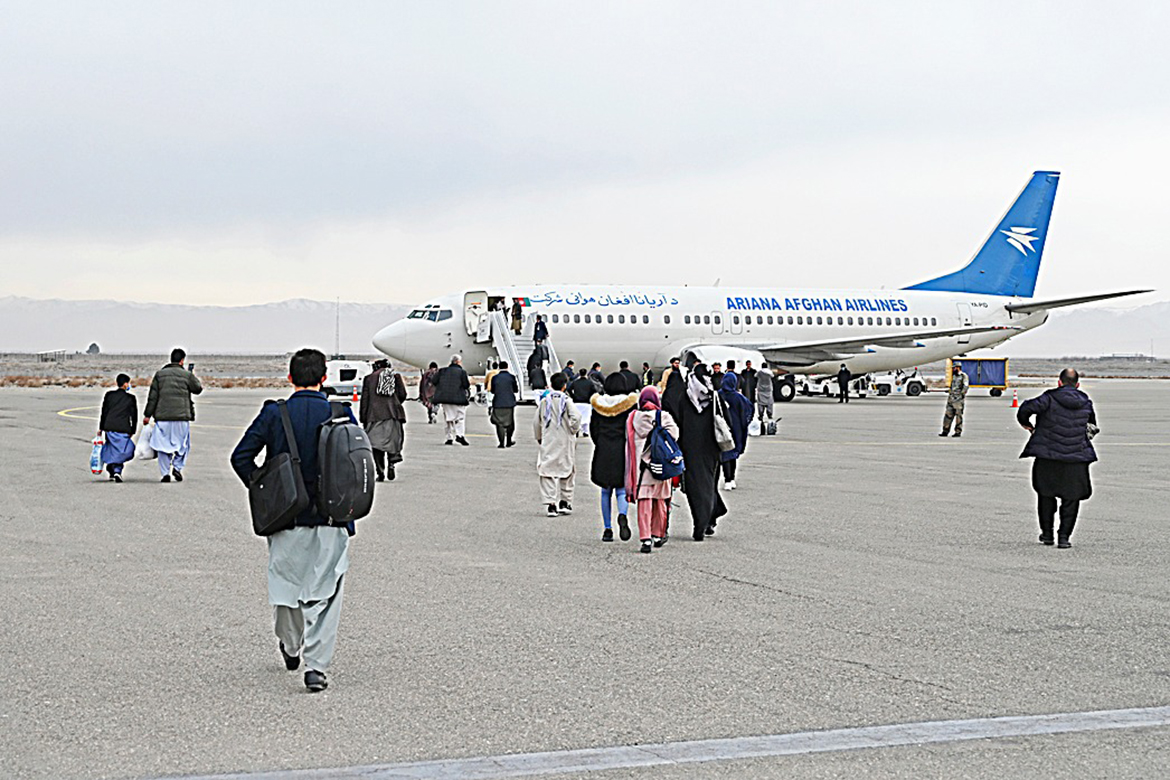UNITED NATIONS: The UN Security Council will soon launch negotiations on the world body's future role in Taleban-ruled Afghanistan, after a report from the organization's chief called for dialogue and advised against isolating the extremists. Led by Norway, which recently hosted landmark talks between Western diplomats and Taleban officials in Oslo, the negotiations are expected to be "very tricky and very difficult," said one UN ambassador under condition of anonymity.
The envoy, who represents a country currently on the Security Council, added that the West wants "to make sure (that) particularly women and girls are not sidelined in that discussion." But on the other side, China and Russia-both veto-wielding council members-could attempt to minimize the impact of human rights issues on the future of the United Nations Assistance Mission in Afghanistan (UNAMA), the envoy suggested.
Another diplomat who asked not to be named said that "consensus" could be found on the issues of humanitarian aid and combatting terror groups in the war-wracked South Asian country. That same diplomat said "differences" could crop up between those who want to see "cooperation with the Taleban (Beijing and Moscow) and those in the West who support a "tough approach" to extract concessions from the hardline Islamist group. The mandate for UNAMA, which has been present in Afghanistan since 2002, expires on March 17.
Recognition?
Beyond the talks within the Council, the definition of the UN's role in Afghanistan will depend in part on the goodwill of the Taleban, who took power in August and are seeking international recognition. So far, no country has obliged, but Foreign Minister Amir Khan Muttaqi, who attended the Oslo talks, told AFP in an interview this week that the regime was inching closer to earning foreign recognition.
The new government in Kabul has so far failed in its efforts to assume the country's seat at the world body, with the nomination of its new ambassador, former Taleban spokesman Suhail Shaheen, still in limbo. The process of both recognizing the government and subsequently accepting its new UN envoy has been frozen at the world body in a deal reached by the United States, Russia and China.
Meanwhile, an attack that killed at least 173 people including 13 US service members during the chaotic Kabul airport evacuation last year was undertaken by a single suicide bomber, a Pentagon investigation concluded Friday.
The investigation ruled out more than one perpetrator or anyone using firearms in the August 26 attack, which was claimed by the Islamic State group. At least 160 Afghan civilians and the 13 US troops were killed by the bombing, which came during the final days of the US military's withdrawal after two decades of war, according to the investigation.
The bomb exploded in a dense crowd just outside the airport's Abbey Gate as thousands of people pushed to try to get inside and leave the country in the US-managed airlift. Although some gunfire erupted after the bombing, US officers said they were warning shots and none of those who died in the event were killed by them. "There were no gunshot wounds" among the victims, said Brigadier General Lance Curtis, who presented the investigation findings Friday.
He said that the deaths were from shrapnel including ball bearings from the bomb, the wounds of which can look like gunshot wounds. Curtis admitted that on the day, the US military thought the attack was "complex," involving an Islamic State gunman as well as the bomber.
"We now know that the explosive fired ball bearings causing wounds that looked like gunshots. When combined with a small number of warning shots, that led many to assume that a complex attack had occurred," Curtis told reporters. Also adding to the confusion was the fact that the shrapnel from the blast punctured tear gas canisters carried by the US troops for crowd control.
That created "instant chaos and sensory overload," said one of the officials who briefed reporters on the investigation. The bomb also left 45 US service members injured, some with brain injuries from the concussive force of the blast. The black-garbed perpetrator, shown in the investigator's sole video of the bombing, was later identified by Islamic State as Abdul Rahman Al-Logari, who was released from a government prison by the Taleban after they took control of Kabul on August 15. -AFP










